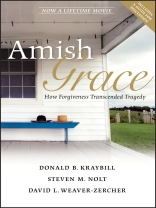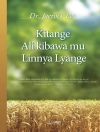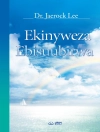On Monday morning, October 2, 2006, a gunman entered a one-room Amish school in Nickel Mines, Pennsylvania. In front of twenty-fivehorrified pupils, thirty-two-year-old Charles Roberts ordered theboys and the teacher to leave. After tying the legs of the tenremaining girls, Roberts prepared to shoot them execution with anautomatic rifle and four hundred rounds of ammunition that hebrought for the task. The oldest hostage, a thirteen-year-old, begged Roberts to ‘shoot me first and let the little ones go.’Refusing her offer, he opened fire on all of them, killing five andleaving the others critically wounded. He then shot himself aspolice stormed the building. His motivation? ‘I’m angry at God fortaking my little daughter, ‘ he told the children before themassacre.
The story captured the attention of broadcast and print media inthe United States and around the world. By Tuesday morning somefifty television crews had clogged the small village of Nickel Mines, staying for five days until the killer and the killed wereburied. The blood was barely dry on the schoolhouse floor when Amish parents brought words of forgiveness to the family of the onewho had slain their children.
The outside world was incredulous that such forgiveness could beoffered so quickly for such a heinous crime. Of the hundreds ofmedia queries that the authors received about the shooting, questions about forgiveness rose to the top. Forgiveness, in fact, eclipsed the tragic story, trumping the violence and arresting theworld’s attention.
Within a week of the murders, Amish forgiveness was a centraltheme in more than 2, 400 news stories around the world. The Washington Post, The New York Times, USA Today, Newsweek, NBCNightly News, CBS Morning News, Larry King Live, Fox News, Oprah, and dozens of other media outlets heralded the forgiving Amish.From the Khaleej Times (United Arab Emirates) to Australiantelevision, international media were opining on Amish forgiveness.Three weeks after the shooting, ‘Amish forgiveness’ had appeared in2, 900 news stories worldwide and on 534, 000 web sites.
Fresh from the funerals where they had buried their ownchildren, grieving Amish families accounted for half of theseventy-five people who attended the killer’s burial. Roberts’widow was deeply moved by their presence as Amish families greetedher and her three children. The forgiveness went beyond talk andgraveside presence: the Amish also supported a fund for theshooter’s family.
AMISH GRACE explores the many questions this story raises aboutthe religious beliefs and habits that led the Amish to forgive soquickly. It looks at the ties between forgiveness and membership ina cloistered communal society and ask if Amish practices parallelor diverge from other religious and secular notions of forgiveness.It will also address the matter of why forgiveness became news.’All the religions teach it, ‘ mused an observer, ‘but no one doesit like the Amish.’ Regardless of the cultural seedbed thatnourished this story, the surprising act of Amish forgiveness begsfor a deeper exploration. How could the Amish do this? What didthis act mean to them? And how might their witness prove useful tothe rest of us?
สารบัญ
Preface xi
Part One 1
1 The Nickel Mines Amish 3
2 The Shooting 17
3 The Aftermath 29
4 The Surprise 43
5 The Reactions 53
Part Two 65
6 The Habit of Forgiveness 67
7 The Roots of Forgiveness 85
8 The Spirituality of Forgiveness 99
9 The Practice of Forgiveness 113
Part Three 123
10 Forgiveness at Nickel Mines 125
11 What About Shunning? 141
12 Grief, Providence, and Justice 155
13 Amish Grace and the Rest of Us 173
Afterword (2010) 185
Interview with Terri Roberts 191
Appendix: The Amish of North America 201
Endnotes 215
Resources for Further Reading 229
Acknowledgments 233
The Authors 235
Index 237
Discussion and Reflection Guide 249
The Fetzer Institute 267
เกี่ยวกับผู้แต่ง
Donald B. Kraybill, Ph.D., is senior fellow at the Young Center of Elizabethtown College. Among his many publications, he has authored or coauthored numerous books on Amish society. The Young Center fielded hundreds of media calls in the week following the shooting.
Steven M. Nolt, Ph.D., is professor of history at Goshen College. He has written extensively on Amish history and culture.
David L. Weaver-Zercher, Ph.D., is associate professor of American religious history at Messiah College. His books on Amish life explore outsiders’ fascination with and perceptions of the Amish.







![ปกของ Brian Schrag & Julisa Rowe: Community Arts for God's Purposes [Chinese] 貼近神心意的社群藝術 ปกของ Brian Schrag & Julisa Rowe: Community Arts for God's Purposes [Chinese] 貼近神心意的社群藝術](https://static.worldofdigitals.com/thumb_webp/740/9781645083740.webp)




